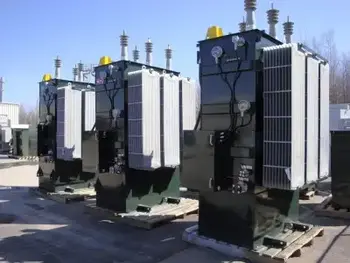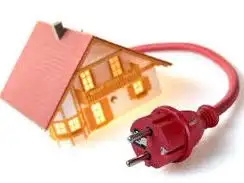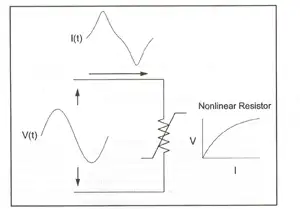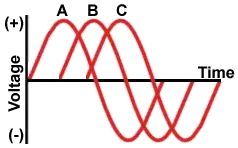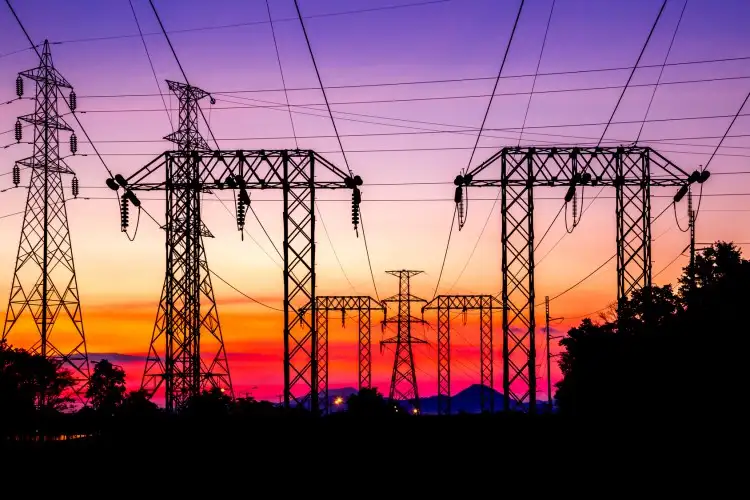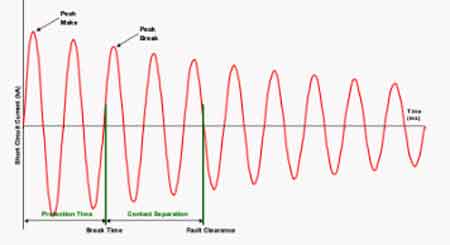Wattmeters
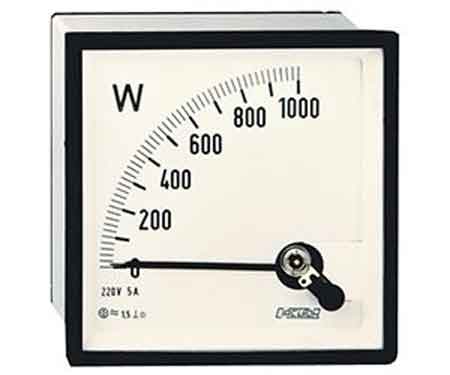
Wattmeters measure electrical power in watts, monitoring energy use in industrial, commercial, and residential systems. They provide accurate active power readings for efficiency, load management, and safety, using voltage and current measurements for precise results.
What are Wattmeters?
Wattmeters are instruments used to measure electrical power. They:
✅ Measure active electrical power in watts for various applications.
✅ Are used in industrial, commercial, and residential energy monitoring.
✅ Help optimize efficiency, manage loads, and ensure system safety.
Working Principle of Wattmeters
Electrical power is calculated using the formula:
P = E × I
Where:
-
P = Power in watts
-
E = Voltage in volts
-
I = Current in amperes
In DC circuits, watts are sometimes expressed as volt-amperes (VA). In AC circuits, wattmeters measure true (active) power, factoring in the power factor to account for phase differences between voltage and current. Wattmeters play a key role in measuring active power, providing accurate data for both industrial and residential energy monitoring.
Construction and Internal Components
A typical wattmeter consists of two main coil assemblies:
-
Current Coil (CC)
-
Heavy-gauge copper wire with low resistance.
-
Connected in series with the load to carry the circuit current.
-
-
Voltage Coil (VC)
-
Fine-gauge wire with high resistance.
-
Connected in parallel with the load to measure voltage.
-
The dynamometer wattmeter is the classic analog design, operating on the motor principle. The interaction between the magnetic fields of the current and voltage coils produces a torque proportional to power, moving the pointer over a calibrated scale. Understanding wattmeter principles is a foundation of basic electricity training, helping learners connect theory to practical power measurement.
Figure 1 – Construction of a dynamometer wattmeter showing current and voltage coil arrangement.
Types of Wattmeters
-
Analog/Dynamometer – Durable, reliable, suited for laboratory and field measurements.
-
Digital – Higher accuracy, data logging, and integration with monitoring systems.
-
Clamp-on – Measure power without breaking the circuit, ideal for quick diagnostics.
-
Specialized – Designed for RF power, audio power, or other niche applications.
In three-phase systems, they are often used alongside 3-phase electricity concepts to ensure balanced load distribution and system efficiency.
Fig. 2. Power can be measured with a voltmeter and an ammeter.
Measuring Power in DC and AC Circuits
In DC circuits, power measurement can be as simple as multiplying voltage and current readings from separate meters.
Example:
If a circuit operates at 117 V DC and draws 1 A, the power is:
P = 117 × 1 = 117 W
In AC systems, especially with reactive loads, a wattmeter is essential because voltage and current may not be in phase. The device automatically accounts for the phase angle, providing accurate true power readings. Accurate wattmeter readings are essential for diagnosing performance issues in 3-phase power networks, where voltage and current relationships are critical.
Fig. 2. Power can be measured with a voltmeter and an ammeter.
Practical Examples and Load Considerations
-
A household iron may consume 1000 W, drawing 8.55 A at 117 V.
-
A large heater may draw 2000 W, or 17.1 A, potentially overloading a 15 A breaker.
-
In industrial settings, wattmeters help avoid overloading equipment, reducing downtime and improving energy efficiency.
Modern Wattmeter Applications
Today’s wattmeters are often part of smart energy monitoring systems that:
-
Track energy consumption over time.
-
Integrate with SCADA and IoT platforms.
-
Enable predictive maintenance through power trend analysis.
-
Support compliance with energy efficiency regulations.
Key Advantages of Wattmeters
-
Accurate real-time power measurement.
-
Enhanced energy management and cost savings.
-
Improved system reliability through overload prevention.
-
Compatibility with both AC and DC systems.
Wattmeters remain a vital tool for measuring and managing electrical power. Whether in a simple residential circuit, a commercial energy audit, or a high-tech industrial monitoring system, they ensure that electrical systems run efficiently, safely, and cost-effectively. As technology advances, digital and networked wattmeters continue to expand their role, integrating into the smart grids and energy-optimized infrastructures of the future. Wattmeter usage is closely linked to the fundamentals of electrical energy, enabling precise monitoring for efficiency and cost control.
Related Articles
On-Site Training
Interested in cost effective, professional on-site electrical training?
We can present an Electrical Training Course to your electrical engineering and maintenance staff, on your premises, tailored to your specific equipment and requirements. Click on the link below to request a Free quotation.


